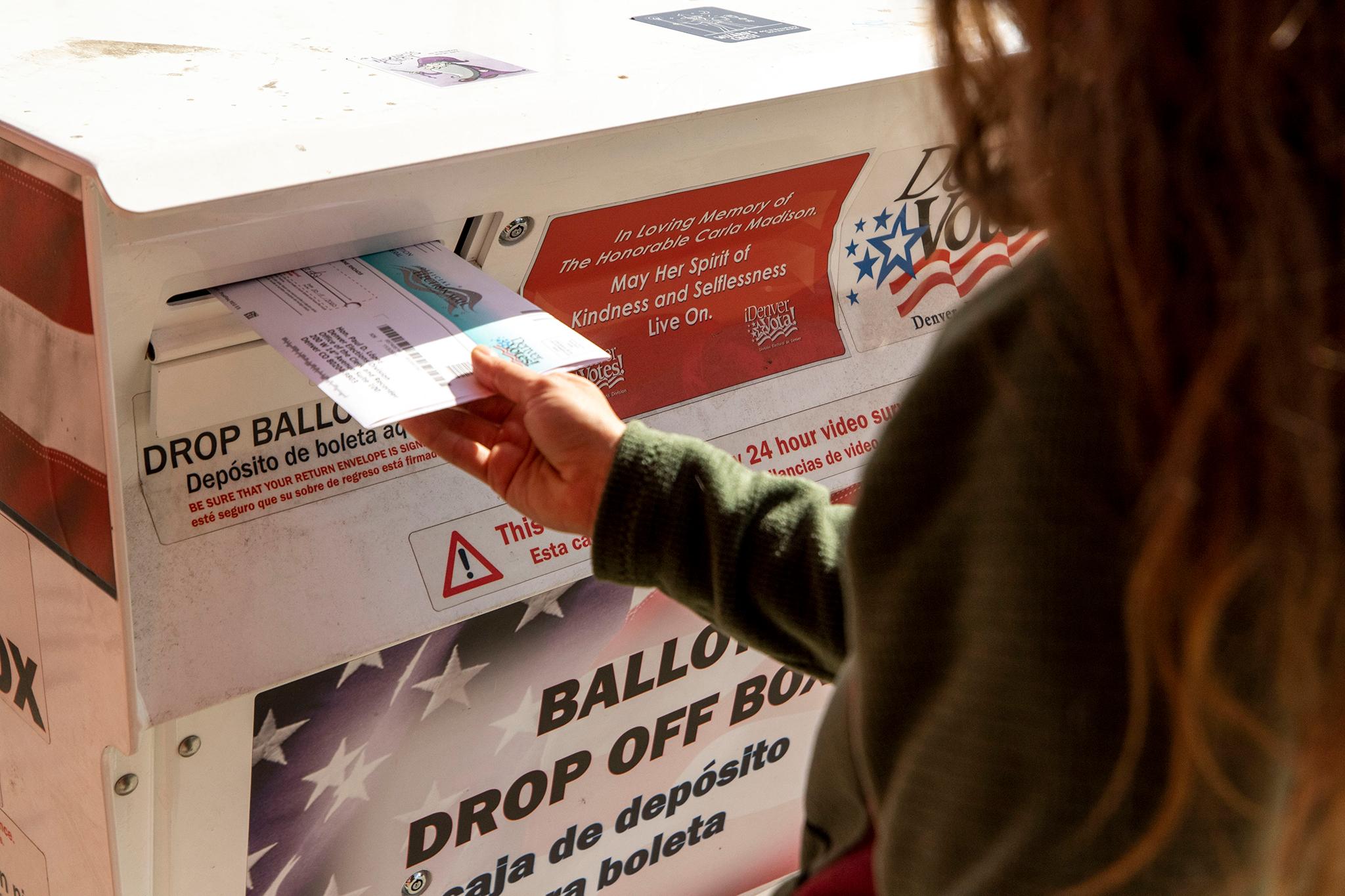
There’s one thing that’s already clear about this fall’s election: Colorado voters are eager to participate. More than a quarter of registered active voters have turned in ballots so far according to figures from the Secretary of State’s Office.
“The signature verification judges came in their first couple days to have some training and a few ballots to work on to warm up. And instead, we had 10,000 ballots,” said Peg Perl, director of elections in Arapahoe County. “So it wasn’t really a chance to gear up slowly, but we had some great experienced judges to help out the new ones.”
Perl said two weeks out from the election, her warehouse had as many returned ballots as she would normally expect in the final week.
Look closer at all those ballots and the numbers show some interesting trends. Close to half of registered Democrats have already voted, a much higher number compared to this time four years ago. A smaller slice of Republicans have cast their ballots, around a third. Analysts expect that gap to narrow leading up to Election Day but it’s clear the left is energized.
“Democratic voters are very much excited to cast their ballots earlier rather than later,” said David Flaherty, the Republican head of Magellan Strategies, a polling firm that analyses election data.
Flaherty expects the GOP to also have a high turnout in the end, but he thinks President Trump’s ongoing criticism of all-mail voting could be leading more Republicans to hang onto their ballots for longer. “Even though I believe [in] our state, most Republicans are extremely comfortable with doing that, I think it's hard.”
Concerns about election procedures may have the opposite impact for other voters — driving them to get their ballots in sooner.
“I was afraid there might be issues,” said 20-year-old Morgan Cartwright of Cortez. “I remember previously I got rejected because my signature was off or something. So if there’s a problem maybe if I voted earlier maybe I could deal with that.”
Democrat Ian Silverii heads the advocacy group ProgressNow and says if the turnout trends continue the way they are now, it would be an absolute landslide for Democrats in Colorado, but he said the odds of that are pretty low.
For now, Silverii said Democratic women are the biggest force behind the enormous ballot return numbers.
“If you look at party by gender, Democratic women are far and away the largest group of voters, followed by Unaffiliated men, followed by Democratic men, followed by Unaffiliated women. Republican men are in fifth place and Republican women are in sixth place.”
Durango resident Kim Kraska is one of those Democratic women who has already voted. She said she feels this is the election that’s mattered most to her in her lifetime.
“I just hate what’s happened in the last 4 years with the hate, the division, the damage done to the environment, environmental protections,” she said. “I just want it to stop and I want to be able to watch the news again without being angry.”
With just over a week to go before the election, Silverii said these early returns will shape how both major parties strategize for their final push.
“Democrats can now spend more time on lower-turnout voters. Whereas Republicans have to make sure that their reliable voters just don't stay home this year for some reason.”
Silverii also points out 13 percent of newly registered voters have already voted.
One big wild card are unaffiliated voters — just over a third of them have voted so far, but Silverii and Flaherty expect their overall turnout to eventually top either Republicans or Democrats. That’s what happened in the 2018 midterm election, when unaffiliated voters in Colorado helped Democrats win the Governor’s office and other statewide seats and flip control of the state senate. Analysts say there’s a good chance that trend may continue.
“The 2018 election was really a referendum on Donald Trump's leadership,” Flaherty said. “And a lot of younger voters, a lot of unaffiliated voters, wanted to cast their ballot when they normally would not, perhaps to have their voice heard, if you will. And now that the presidential election is finally here, that's why we believe or anticipate to see the exact same thing.”
Even though Colorado isn’t considered a swing state in the presidential election, the U.S Senate race between Republican Sen. Cory Gardner and Democrat John Hickenlooper is competitive, and could help determine which party controls the U.S. Senate. Republicans say they’re keeping a close eye on returns.
“I think it's the highest-propensity Democrats, the ‘hard’ Democrats that are voting right now and I don't think that's incredibly unexpected,” said Republican political strategist Ryan Lynch. “We did gain some ground over the weekend. It's tracking in the right direction for Republicans, so there's no need to panic at this point.”
With a pandemic and wildfires raging in parts of the state, to say it’s an unusual election season would be an understatement. On Thursday sheriff's deputies in Grand County escorted bipartisan election judges to retrieve ballots from the mountain community of Grand Lake, which was evacuated when the East Troublesome fire took off earlier this week.
CPR’s Caitlyn Kim and Andrew Kenney contributed to this report.









